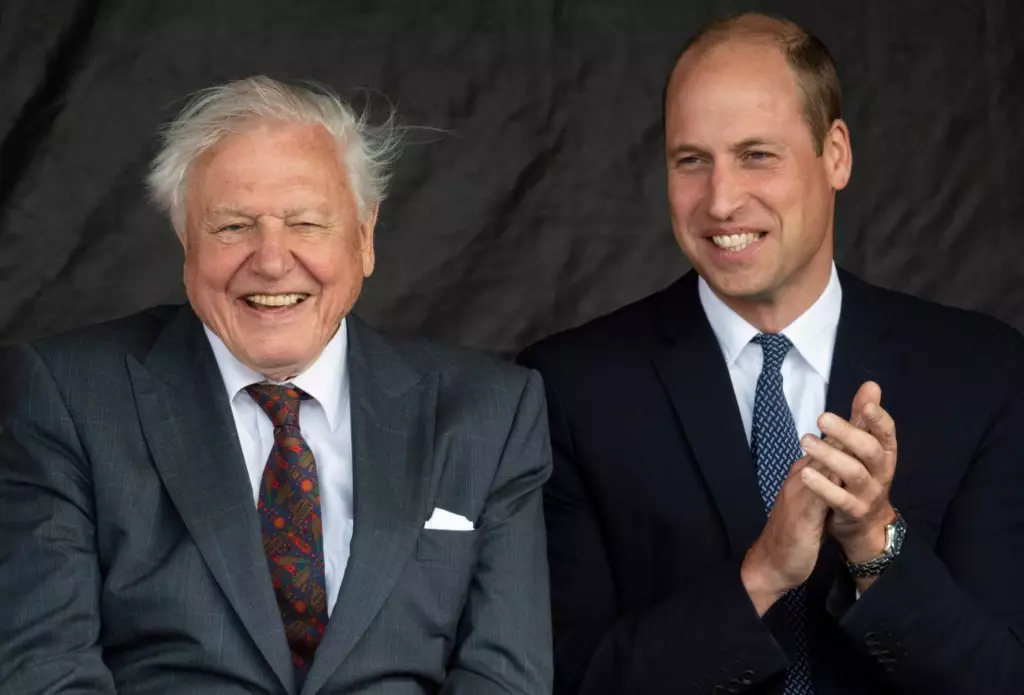In a captivating conversation with Prince William, renowned broadcaster and natural historian Sir David Attenborough revealed a harrowing experience from the early days of his career that underscores the profound perils faced by those who explore the depths of our oceans. At 99 years old, with a legacy that spans decades, Attenborough shared a poignant anecdote about nearly suffocating due to faulty diving equipment back in 1957. This near-death encounter not only highlights the risks associated with early diving technology but also serves as a reminder of the overlooked dangers that marine explorers face even today.
The gripping moment arrived when Attenborough first donned a scuba diving helmet, a necessary yet imperfect piece of equipment during that era. His vivid recollections bring forth the reality of human vulnerability in the face of technological flaws. “I suddenly felt water coming around my chin and up over my mouth,” he recounted, the weight of that moment palpable even decades later. It’s fascinating to consider that such an esteemed figure in environmental awareness faced life-threatening scenarios before embarking on the monumental journey of advocating for oceanic preservation.
The Human Element in Technology’s Flaws
What resonated deeply in Attenborough’s story is not just the physical danger he faced, but also the dismissive attitude of a director who prioritized stubbornness over safety. This conflict between man and machine reflects a broader theme in our interactions with technology—trust versus skepticism. Technology is designed to aid exploration, yet when it fails, the consequences can be dire, leading to pressing questions about accountability. The director’s refusal to acknowledge the fault in the equipment ultimately led to a terrifying ordeal for Attenborough and a quick reckoning when the equipment was tested firsthand.
This narrative strikes a chord as we consider contemporary marine technology. The debate surrounding the ethical implications of our advancements in submarine exploration technology parallels the lessons learned from Attenborough’s experience. Today’s scientists and divers still grapple with the balance between innovation and safety, reminding us that sometimes, the most groundbreaking explorations come at high costs.
Documenting the Silent Crisis of Biodiversity
Attenborough’s reflections are not merely nostalgic; they provide essential context to his latest documentary, “Ocean,” which champions the urgency of addressing the catastrophic loss of underwater biodiversity. Launched in recognition of World Oceans Day on National Geographic streaming platforms, the documentary delves into the critical state of our oceans, highlighting the untold story of human impact on deep-sea ecosystems.
“The awful thing is that it’s hidden from you and from me and most people,” he noted, encapsulating the widespread ignorance about the deterioration of underwater life. His emphasis on the “unspeakably awful” state of the ocean floor challenges viewers to confront the ecological crisis, particularly the glaring disparity between societal reactions to land-based environmental issues versus those affecting marine life. If such horrific destruction were occurring on land, public outrage would likely boil over, yet the depths of the ocean remain shrouded in mystery.
Attenborough’s heartfelt clarion call urges us to reconsider our relationship with the ocean, each wave acting as a reminder of our fragile connection to nature and the responsibilities that come with it. As influential figures like Attenborough continue to shine a spotlight on these pressing issues, it reinforces the notion that awareness and education are necessary to champion change, not just for the depths below but for the future of our planet.
